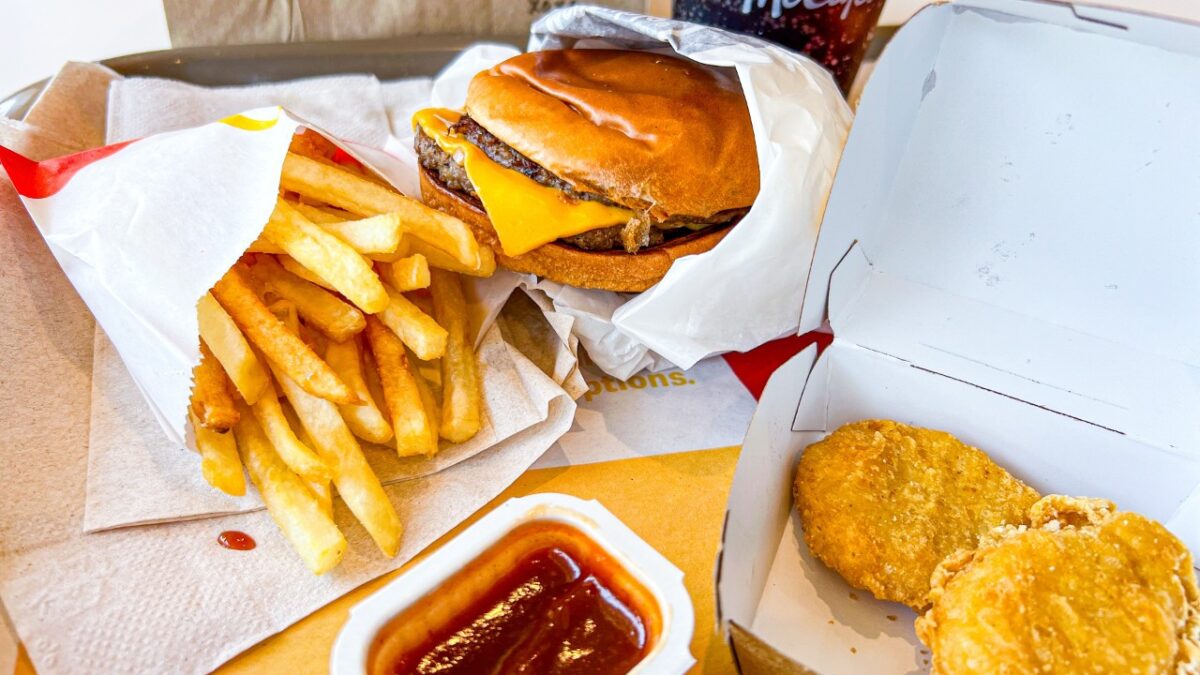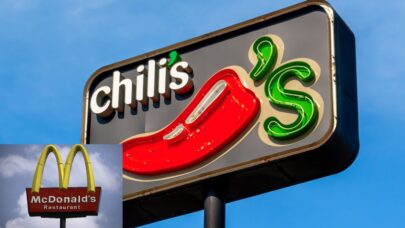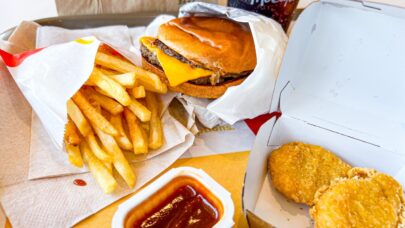When you buy something through one of the links on our site, we may earn an affiliate commission.
For many Americans, a quick trip to the drive-thru was always a convenient and affordable way to enjoy a meal. Over the past year or so, the tide has been changing and now a recent survey suggests those affordable fast food days may be over. According to a LendingTree poll, nearly 80% of Americans now view fast food as a luxury due to rising prices.
The survey had over 2,000 participants and it concentrated on their opinions and behaviors regarding fast food and if their opinions are changing now that prices are on the rise.
78% of those polled answered yes to this exact question in the survey: “Fast food has gotten more expensive, and I now view it as a luxury.” And further, 80% or higher answered yes who were among those making less than $30,000 a year.

Findings Of The Survey
- 3 in 4 Americans typically eat fast food at least once a week, but the majority (62%) say they’re eating it less due to rising prices
- 78% of consumers view fast food as a luxury because it’s become increasingly expensive. Additionally, half of Americans say they view fast food as a luxury because they’re struggling financially.
- 67% of Americans agree fast food should be cheaper than eating at home, 75% say this isn’t the case
- When asked about their go-to for an easy, inexpensive meal, 56% cite making food at home
- Nearly half (46%) say fast-food restaurants cost similarly to their local sit-down restaurants
- 78% of Americans are concerned about surge pricing at fast-food restaurants, but 72% admit they’d be more likely to eat fast food at off-hours if there was a discount
- Americans rank Chick-fil-A as the most high-end fast-food chain (25%), followed by Starbucks (22%) and Chipotle (21%)
- Even among the highest-income Americans, more than half say they’re eating it less (52% of those earning $100,000 or more a year)
- 65% of Americans say they’ve felt “sticker shock” or been surprised by the size of their bill at a fast-food restaurant in the past six months
The financial strain is particularly acute for low-income earners. Parents with young children are also feeling the pinch, with 58% viewing fast food as an occasional treat rather than a regular option.
The reasons behind the price hikes are complex. The survey doesn’t delve into specific causes, but industry analysts point to inflation and rising food costs as contributing factors as well as menu price increases to recent minimum wage hikes.
Shake-Up On Horizon?
In response to this changing scene, fast-food restaurants are scrambling to adapt. Last week, we saw multiple chains introducing value meal deals or value menus to lure customers back. McDonald’s is launching a $5 Value Meal, Burger King answered back with their own $5 Meal Deal, Wendy’s announced a $3 Breakfast Deal, and Jack In The Box – a Under $4 Munchie Menu.
Others are experimenting with technology, such as self-service kiosks, to offset rising labor costs by needing less workers. During an interview last week, the former CEO of Hardees/Carl’s Jr. predicted fast food chains closing sometime in the near future. He also said another major chain discussed outsourcing order taking at the drive-thru to India.
It looks like a major shake-up is on the horizon for some chains as they start to seriously engage in a mad scramble to compete for a traffic from an ever-decreasing customer base.
Analysts warn that continued price increases could backfire. If fast food loses its affordability altogether, it could be “ova rock”, at least for the chains at the bottom of the ladder. The industry as a whole will need to find a way to balance rising costs with consumer expectations to maintain its foothold in American culture.










